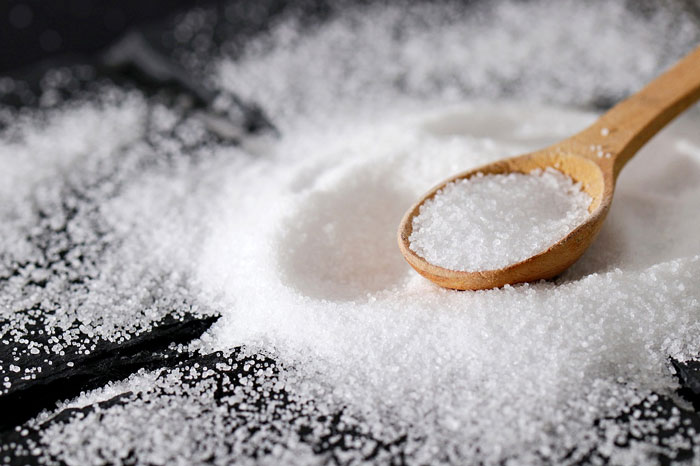
This article focuses on calcium chloride and the hazards associated with it, including its properties, how to handle it safely, and what to do when exposed to it.
What is Calcium Chloride?
Calcium chloride is a white colored chemical substance known to have some properties useful in melting ice and controlling dust. Calcium chloride has the chemical formula CaCl2 and plays a vital role in manufacturing edibles and other products.
Common Calcium Chloride Hazards
Calcium chloride can be harmful if not handled with care. Although it is a chemical found in edibles, which makes it look harmless, it can also be hazardous to health since it can burn the skin and irritate the eyes if there is contact.
It should not be inhaled or ingested. When it is inhaled, it affects the respiratory system and causes pain and discomfort. When swallowed, it causes irritation and pain in the stomach, affecting the intestinal areas, which lead to vomiting and discomfort.
Calcium Chloride Safety Handling Procedures
Calcium chloride should be used in a well-ventilated environment. Avoid spills on the floor and your surroundings.
Make sure what contains the chemical has no leakage and if there is, seal it up immediately.
After use, wash your surroundings and your working clothes in case of spills, do not forget to seal container tightly.
Calcium Chloride Safety Storage Procedures
Calcium chloride should be kept in a well coated mild steel tank. Coating the inside wall of the tank is very important, so as to prevent iron from reacting with the chemical, which causes it to have a change in colour.
To store a small quantity of the chemical, make use of plastic materials. Do not store this chemical in a wet environment.
Calcium Safety Disposal Procedures
Calcium chloride is not a substance you dispose without care taken, its disposal should be done properly for safety reasons.
There are various ways to dispose this chemical; one of them is through the drain. Follow this procedure carefully to dispose calcium chloride down the drain.
Dilute calcium chloride with more than enough water so as to make it safe for disposal.
After diluting the chemical, you can flush it down your kitchen sink, bath tub, etc. as long as it has a drain.
Turn on the tap as you flush it down the drain and leave the water running for about 6 minutes before turning it off.
How to Handle Exposures to Calcium Chloride
Accidents are unpredictable sometimes. When using calcium chloride you may experience accident, if that is the case then take quick action to minimize the damage associated with the chemical.
Calcium chloride can be accidentally inhaled, ingested, or can come in contact with the skin and eyes.
Follow these procedures when you get exposed to this chemical:
- Inhalation: Whenever this chemical is inhaled, take the victim to a well-ventilated place for fresh air, and then call for medical help immediately.
- Skin contact: When you are not well covered, you are prone to contact this chemical with your skin. If this happens, wash your skin thoroughly with enough water and take off the clothes that have contact with the chemical. Get medical help immediately.
- Eyes: If this chemical enters the eye, flush your eyes with enough water. Make sure you take off your contact lens if you have one. Then get medical help.
- Ingestion: Swallowing calcium chloride is not safe at all. But if it happens, do not force or compel the victim to vomit, instead get the victim to a medical facility.
Calcium Chloride Properties (Physical and Chemical)
Here are more facts about calcium chloride to help increase your knowledge of the chemical:
Physical Properties: Calcium chloride is a whitish powder that has no smell or odor, and has molar mass of 110.98 g/mol. The density of this chemical is known to be 2.15 g/ml.
It has been proven to have melting point of 782 degree Celsius and a very high boiling point of over 1600 degree Celsius.
Chemical Properties: Calcium chloride quickly dissolves in water. And whenever that happens, it produces a huge amount of energy in the form of heat. This means the dissolution in water is an exothermic reaction.
When it’s in water, calcium chloride dissociates completely into ions, that is, the calcium cations ca2+ and the chloride anions Cl- as shown below:
CaCl2 → Ca2+ + 2Cl-
- Calcium chloride therefore forms ionic solutions.
- Calcium chloride is able to absorb moisture from air enough to form a solution.
- Chemical substances which behave this way are said to be deliquescent.
- Calcium chloride is also soluble in ethanol, aceticacidand methyl carbonate.
Calcium Chloride Preparation
Calcium chloride can be acquired from limestone (CaCO3) when it’s reacted with hydrochloric acid (HCI).
It is also a secondary product from soda ash, whenever it is (soda ash) produced through the Solvay process.
Calcium Chloride Uses
Calcium chloride is mainly used in Japan for melting ice on the road during winter. It is also used to treat water in swimming pools.
It serves as a preservative in food. Many industries use the chemical to produce paints and dye.
Conclusion
Calcium chloride is a very useful chemical but also has its down side. This article educates you about this chemical and how you should use it properly and avoid hazards associated with it.
Adhere to the procedures discussed above carefully in order to avoid harm when using this chemical.
